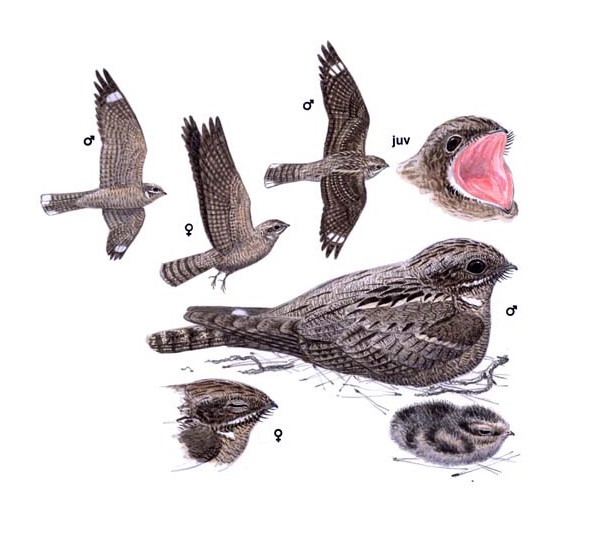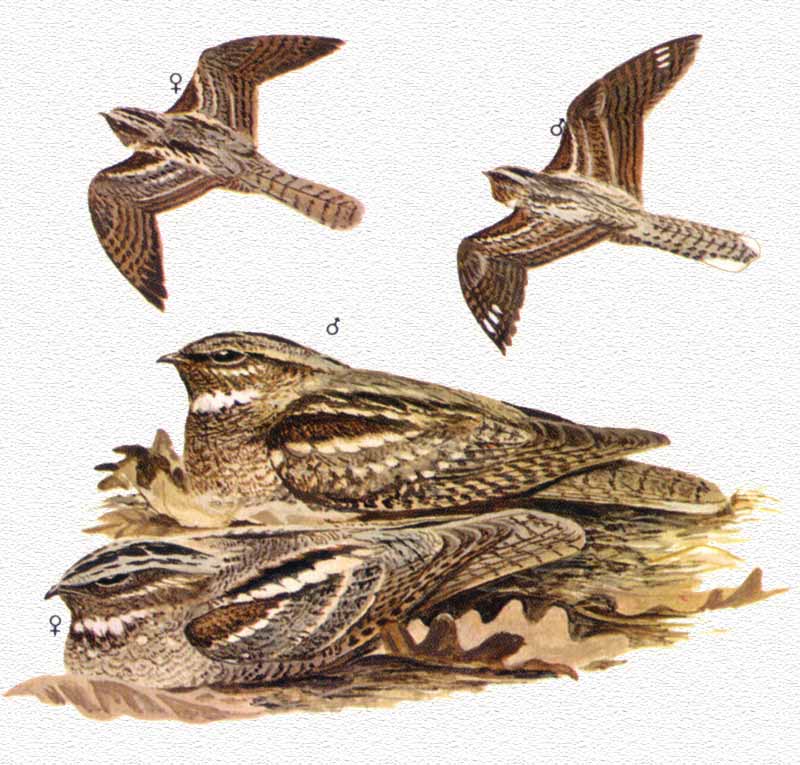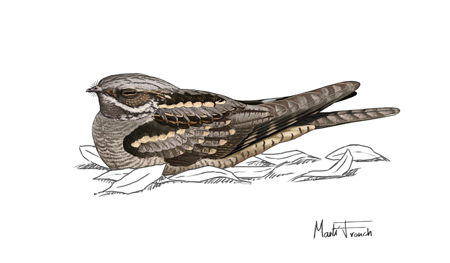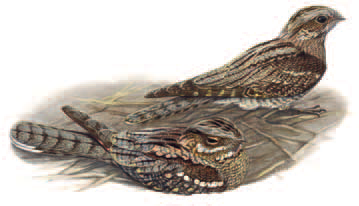In Italy the species is nesting and is found between May and September throughout the national territory, with the exception of the highest mountains and the Po Valley. The species winters mainly in Africa, only occasionally in the Mediterranean area.
The Succiacapre is mainly found in open environments with little tree and shrub vegetation; these can be cultivated, lawns, uncultivated, and areas crossed by fires. It is often found also in the dirt roads and in the plain woods. It has a clear preference for the plain and lowland areas placed up to 500 metres s.l.m.
The term Caprimulgus means 'milking goats' in Latin. It derives from an ancient belief that this bird tries to suck milk from goats. Everything comes from the fact that it frequents the flocks to catch the insects that accompany them.
It’s a strange bird, both in shape and behavior. The body is slender with rounded shapes; the wings and the tail are long (of pointed shape the first and squared the second), the head wide and flattened with large eyes. The mouth is wide and deep, suitable for catching insects in flight.
The legs and feet appear short and thin; there are three front and one back fingers. The nail of the middle finger has a particular comb shape; it seems that this is used to clean or comb the whiskers.
The Nightjar has a cryptic livery that camouflages it in the soil; for its perfect mimicry it appears as a piece of wood.
Color shades can be brown, red, cream, gray and black. The males have typical white spots on the distal portion of the wings and of the tail.
Reproduction takes place between May and August and is influenced by the lunar cycle. The nest is built on the ground in the middle of shrub vegetation or in sparse woods of oaks and pines. In the most favourable zones, they can form 'colonies' of 3-4 pairs. The Nightjar has essentially crepuscular and nocturnal habits. It uses isolated trees of medium height for daytime rest and for hunting and courtship flights but can also spend many hours of the day on the ground. A peculiar characteristic of this bird is the territorial song; it is a continuous and prolonged trill, even for tens of minutes, which is much more similar to that of crickets and cicadas. The flight is also unique and unmistakable; it seems to swing from one side to the other giving the impression of lack of stability, often changing direction. In flight it also emits a very characteristic snap.The populations of this bird are in slow but generalized decline mainly due to the use of the pesticides, the vehicular traffic, the disturbance in the reproductive sites and the loss of the suitable habitats.
The Nightjar is inserted in Annex I of the European Directive 2009/147/EC



